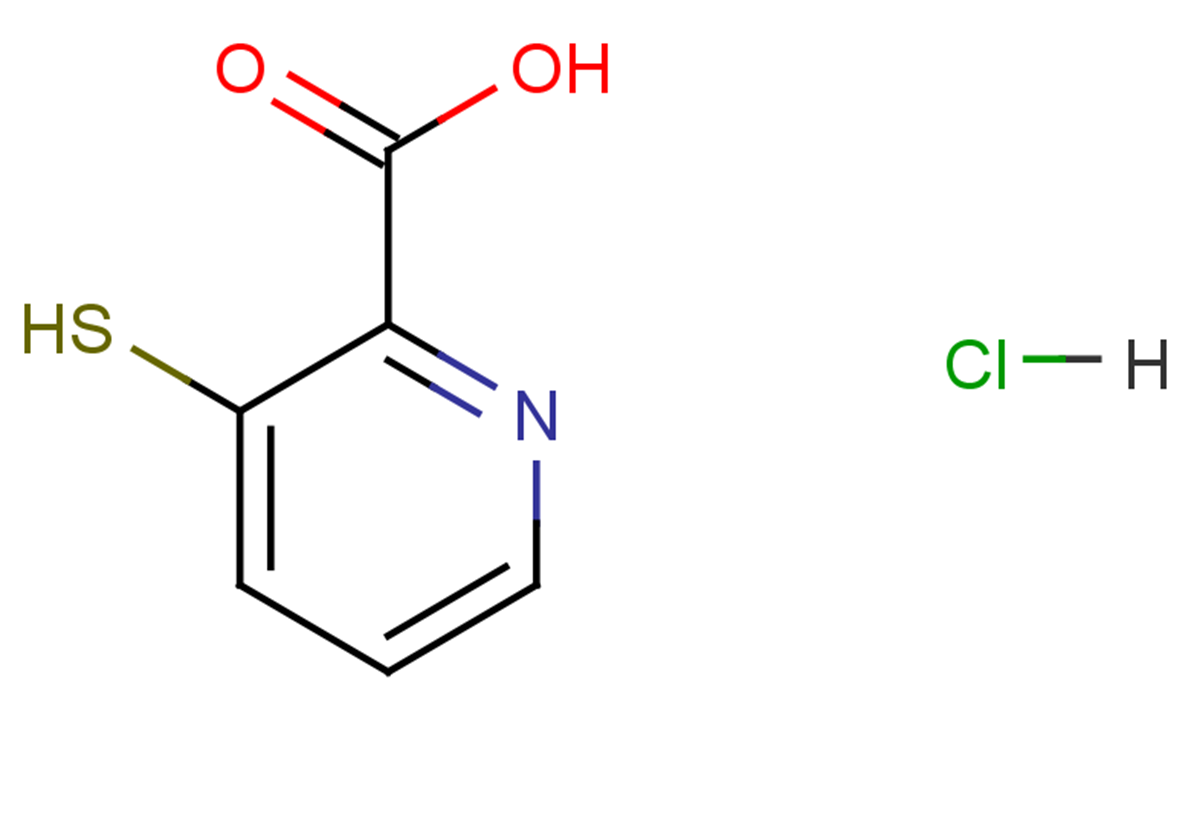
SKF-34288 hydrochloride
CAS No. 320386-54-7
SKF-34288 hydrochloride( 3-Mercaptopicolinic acid hydrochloride )
Catalog No. M24253 CAS No. 320386-54-7
SKF-34288 hydrochloride is an inhibitor of phosphoenolpyruvate carboxykinase (PEPCK),and inhibits Asn metabolism and results in an increase in amino acids and amides.
Purity : >98% (HPLC)
 COA
COA
 Datasheet
Datasheet
 HNMR
HNMR
 HPLC
HPLC
 MSDS
MSDS
 Handing Instructions
Handing Instructions
| Size | Price / USD | Stock | Quantity |
| 5MG | 291 | In Stock |


|
| 10MG | 485 | In Stock |


|
| 25MG | 782 | In Stock |


|
| 50MG | 1062 | In Stock |


|
| 100MG | 1431 | In Stock |


|
| 200MG | Get Quote | In Stock |


|
| 500MG | Get Quote | In Stock |


|
| 1G | Get Quote | In Stock |


|
Biological Information
-
Product NameSKF-34288 hydrochloride
-
NoteResearch use only, not for human use.
-
Brief DescriptionSKF-34288 hydrochloride is an inhibitor of phosphoenolpyruvate carboxykinase (PEPCK),and inhibits Asn metabolism and results in an increase in amino acids and amides.
-
DescriptionSKF-34288 hydrochloride is an inhibitor of phosphoenolpyruvate carboxykinase (PEPCK),and inhibits Asn metabolism and results in an increase in amino acids and amides.
-
In VitroCell Viability Assay Cell Line:C2C12 cell Concentration:0, 0.01, 0.1, 0.25, 0.5, 1 mM Incubation Time:48 h Result:Dose-dependently inhibited C2C12 cell proliferation.
-
In VivoAnimal Model:Starved rats Dosage:37.5, 75 and 150mg/kg Administration:Oral administration (p.o.)Result:Showed dose-dependent magnitude and duration of the hypoglycaemic effect.
-
Synonyms3-Mercaptopicolinic acid hydrochloride
-
PathwayOthers
-
TargetOther Targets
-
RecptorPEPCK
-
Research Area——
-
Indication——
Chemical Information
-
CAS Number320386-54-7
-
Formula Weight191.63
-
Molecular FormulaC6H6ClNO2S
-
Purity>98% (HPLC)
-
SolubilityH2O: 4 mg/mL (20.87 mM; Need ultrasonic)
-
SMILESO=C(C1=NC=CC=C1S)O.[H]Cl
-
Chemical Name——
Shipping & Storage Information
-
Storage(-20℃)
-
ShippingWith Ice Pack
-
Stability≥ 2 years
Reference
molnova catalog



related products
-
DL -34-Dihydroxymand...
34-Dihydroxymandelic acid is a minor metabolite of norepinephrine in humans. Patients with neuroblastoma experience elevated levels of 34-Dihydroxymandelic acid.
-
NotoginsenosideFa
Notoginsenosides Fa and R4 show significant neurite outgrowth enhancing activities in human neuroblastoma SK-N-SH cells.
-
Varespladib methyl
Varespladib methyl, a bioavailable prodrug of Varespladib, is a selective group II secretory phospholipase A2 inhibitor.



 Cart
Cart
 sales@molnova.com
sales@molnova.com


